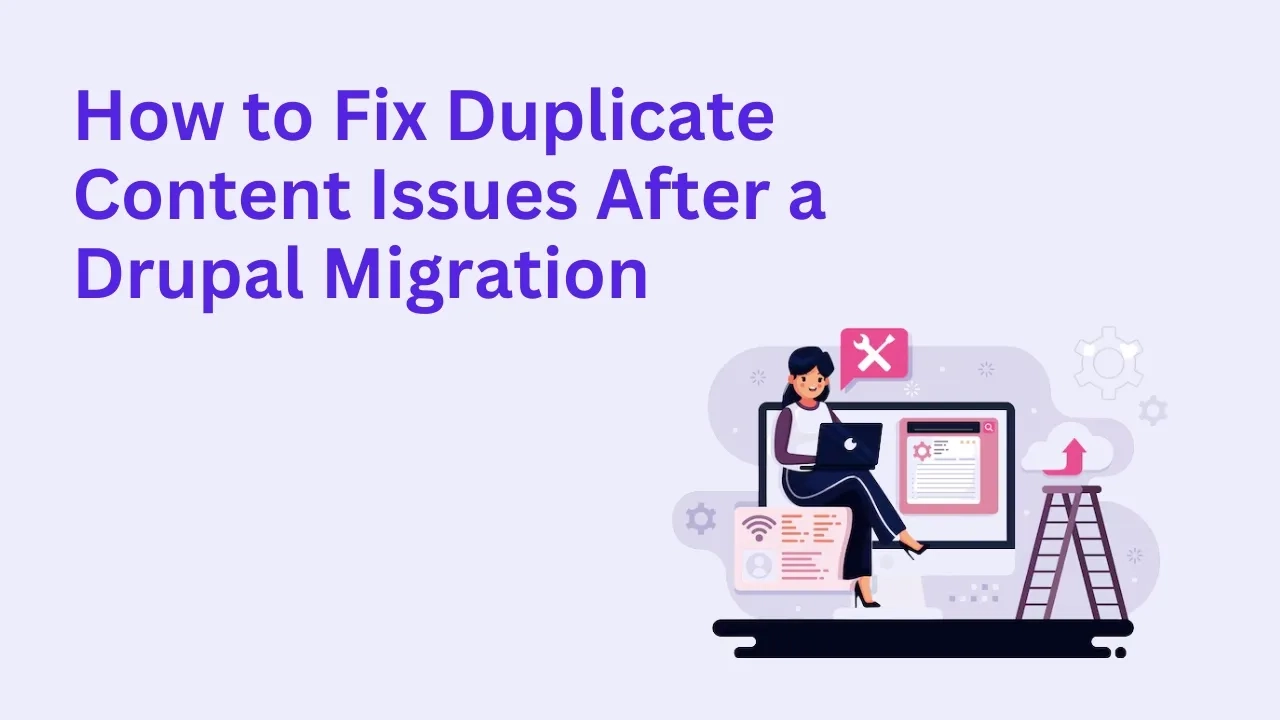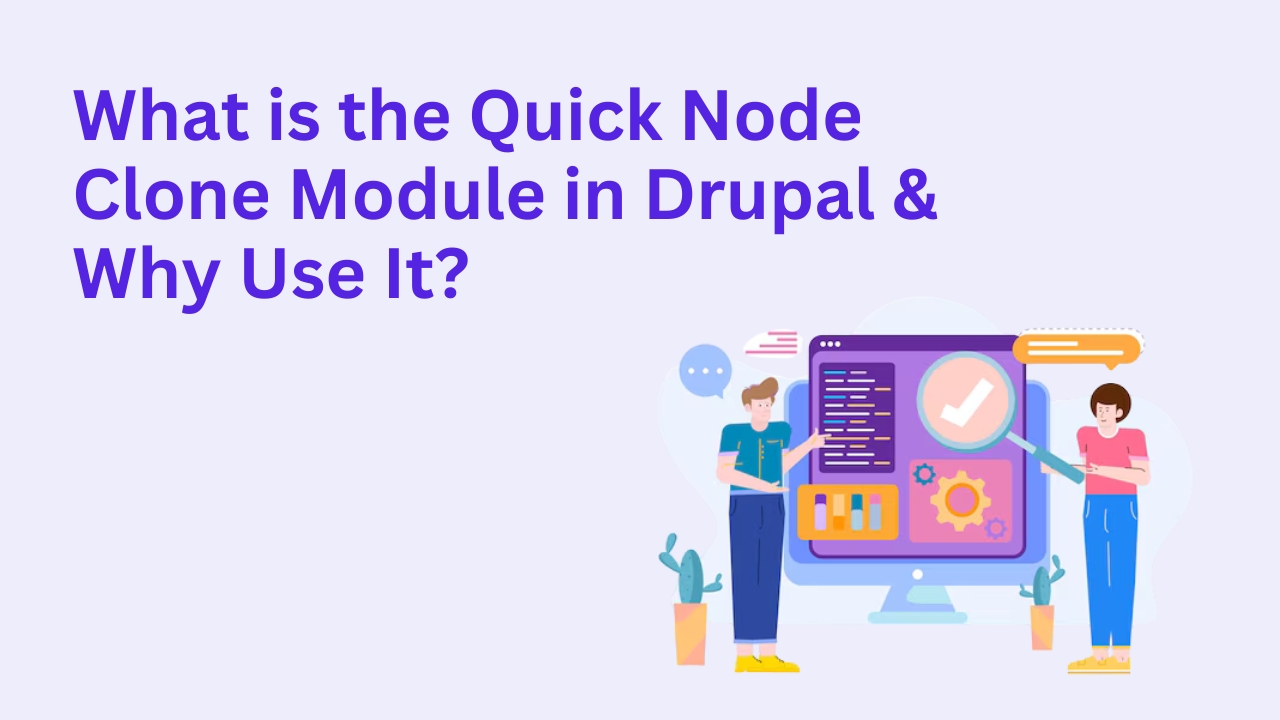How to Fix Duplicate Content Issues After a Drupal Migration

Migrating your website to a new platform can be an exciting yet challenging process. When you move to Drupal, it offers flexibility and powerful features to manage your content, but it also comes with a common issue: duplicate content. These issues can harm your site's SEO, confuse search engines, and lead to a poor user experience. However, with a strategic approach, you can easily resolve these duplicate content issues after a Drupal migration. Here's how you can do it step by step.
1. Understand the Causes of Duplicate Content
Before fixing the issue, it's essential to understand what caused it. Common reasons for duplicate content after a migration include:
- Multiple URLs for the same content: This can occur when Drupal generates different URLs for the same page (e.g., with or without a trailing slash, or using both www and non-www versions).
- Duplicate page titles and meta descriptions: When migrating from another platform, the meta tags may be duplicated across pages.
- Content duplication during the migration process: It's possible that content was accidentally copied multiple times during the move to Drupal.
2. Check for URL Parameters and Redirects
One of the main causes of duplicate content is when the same content is accessible through different URLs. To resolve this issue, set up proper redirects from any duplicate URLs to the primary one.
- 301 Redirects: These are permanent redirects that inform search engines that a page has moved. By setting up 301 redirects, you consolidate page authority to the correct URL, preventing duplicate content issues.
- Canonical Tags: If there are multiple URLs that point to the same content, you should use canonical tags. These tags tell search engines which URL is the "preferred" version.
3. Use the Redirect Module in Drupal
Drupal provides several modules that can help resolve duplicate content problems. One of the most useful is the Redirect module. This module allows you to set up redirects from old URLs (including those with trailing slashes or unnecessary parameters) to the correct version. It also provides an easy way to track and manage redirects.
4. Check for Duplicate Content in Taxonomy Terms
Sometimes, content may appear to be duplicated due to the way taxonomy terms are handled. For example, the same article could appear under different category pages or tag pages. Review your taxonomy structure and ensure that content is categorized appropriately.
- You can use Drupal's built-in tools or custom views to control which content appears in multiple taxonomies.
- Consider using a module like Pathauto to generate clean, SEO-friendly URLs automatically.
5. Review Content Types and Views
If you have migrated content from another platform, it's possible that you may have created duplicate content types or views that display the same information in multiple places. Audit the content types and views on your Drupal site to ensure no duplication occurs.
- Content Type Fields: Check for redundant fields or display settings that may create content redundancies.
- Views Settings: Ensure that your views are not displaying the same content in different ways. You can use the "distinct" option in views to prevent duplicate entries from appearing in lists or grids.
6. Fix Duplicate Meta Tags
Often, content duplication is not just about the content itself but the metadata surrounding it. After migration, check that your meta tags, such as page titles and descriptions, are unique across different pages. The Metatag module can help automate this process by adding dynamic meta tags to each page, ensuring they’re tailored to each piece of content.
7. Perform a Content Audit
A thorough audit of your content is crucial. You need to check for duplicate titles, body content, and URLs. Tools like Google Search Console and Screaming Frog can help identify pages with duplicate content. These tools allow you to see how search engines are indexing your site, which can help pinpoint potential issues.
- Google Search Console: Check for pages flagged for duplicate content or pages with crawling errors.
- Screaming Frog SEO Spider: Use this tool to crawl your Drupal site and detect pages with similar content or other SEO issues.
8. Fix Broken Links and Missing Content
In the process of migration, broken links and missing content can also cause duplicate content problems. If internal links point to non-existent pages, they may create unnecessary duplication or lead to a poor user experience.
- Use the Link Checker module in Drupal to detect broken links.
- Ensure that all images, files, and content are correctly migrated and accessible.
9. Keep Your Site Structure Organized
A well-structured site can prevent duplication by ensuring that content is grouped and categorized logically. Drupal’s flexible content architecture allows you to build custom structures for your pages, categories, and terms. Ensuring everything is organized can prevent content from being duplicated unintentionally.
- Use Drupal's built-in features like content types, blocks, and menus to keep your content organized.
- Review your site’s navigation and internal linking structure to ensure it's intuitive and clear.
10. Use the Drupal SEO Checklist
To ensure your site is fully optimized for search engines post-migration, you can use Drupal’s SEO checklist. This checklist will guide you through all the necessary steps to ensure that your Drupal site is optimized for SEO and free of duplicate content issues.
Conclusion
Fixing duplicate content issues after a Drupal migration can be a bit tricky, but with the right tools and strategies, it’s entirely manageable. By addressing issues like duplicate URLs, meta tags, and taxonomy terms, you can enhance your site’s SEO performance and user experience. If you’re uncertain about the process, seeking help from a professional Drupal development company can ensure a smooth migration.
For more expert help and guidance with your Drupal migration or development, visit Drupalify for comprehensive Drupal solutions.








